We made it to Yellowstone! 1200+ miles, only 4 coffees, and 3 jars of peanut butter and the six of us were ready for an adventure in the forest!
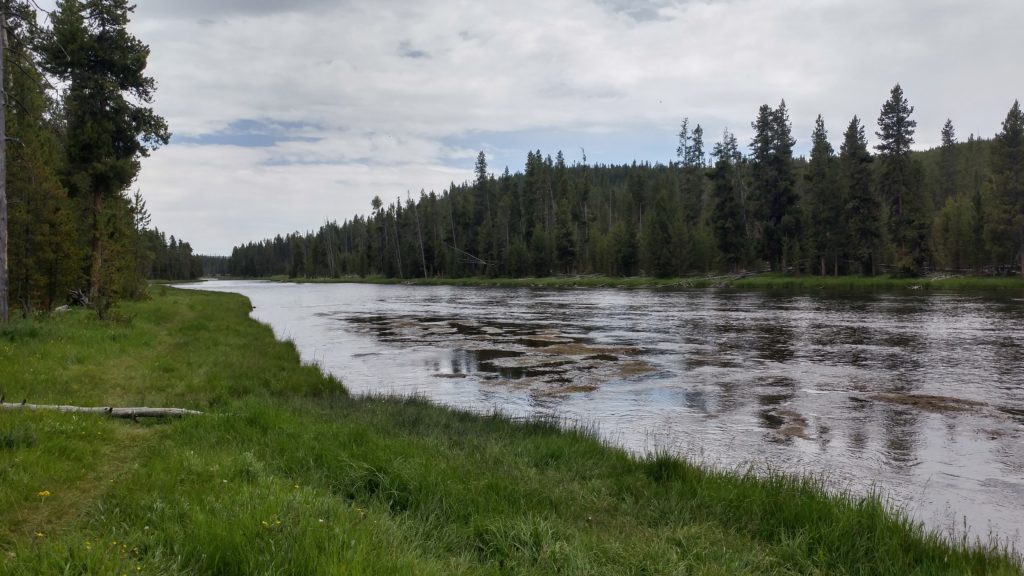
It was so beautiful here we just pulled over and had a picnic right in the park. If it was like this all the time, I’d move in next week. But fortunately it’s protected and snowed in part of the time, which is even more amazing!
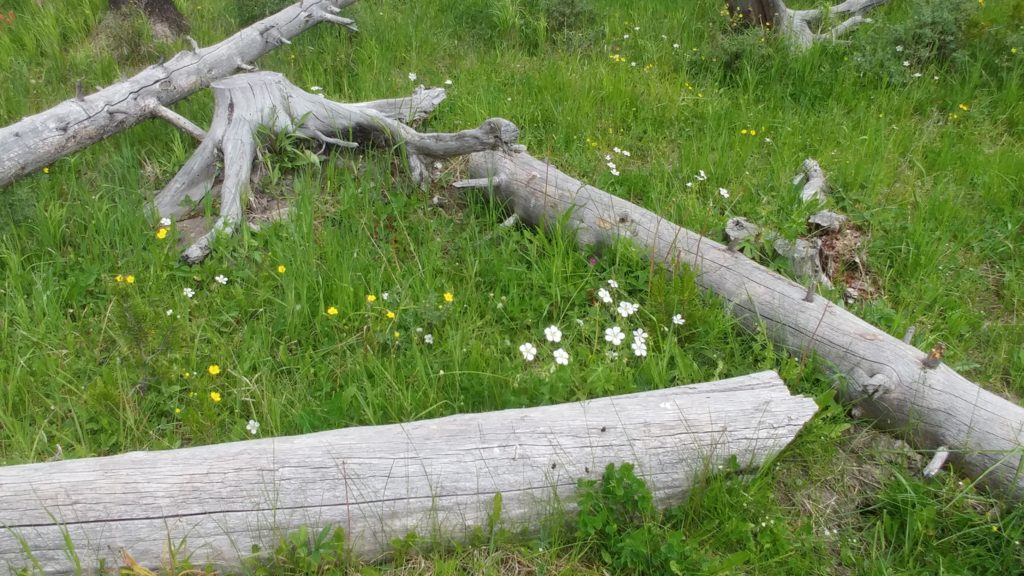
INSERT VIDEO yellowstone-intro.mp4
We started off with a picnic in the park, then drove to the Lower Geyser Basin to find the Fountain Paint Pots!
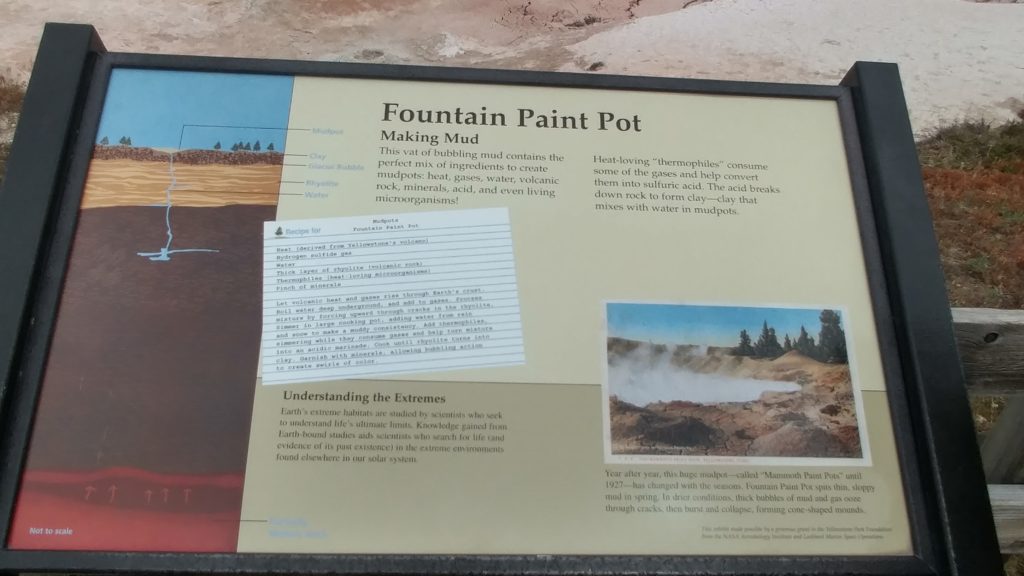
The paintpots are on unstable sediments on top of solid rock.
They can have either a lot of water (called hot springs and geysers) like the ones below:
…or not much water (mudpots and fumaroles) like the ones in the next video:
In the early summer the paintpots are thin and watery from all that rain and snow from the winter, but in late summer, they are thick and bubbly. The mud you see bubbling is made of minerals like silica, and the rhyolite in the area is composed of quartz and feldspar. The steam has acids which break down the feldspar into clay (called kaolinite).
INSERT VIDEO paintpot-intro.mp4
Thermophiles are microorganisms that love heat (these are cyanobacteria) and you can see them in these photos in brown, green, and orange. They change color depending on the temperature of the water that they inhabit. As they cool down will turn more orange or brown. They also change color depending on the season and how much sunlight they are getting. These love water around 165 degrees Fahrenheit.
Yellowstone is one of the few places on earth where geysers happen. The rain and snow from winter provide the water for the geysers, and the heat from under the ground warms up the rocks and water and cracks in the rock allow the water the circulate and bubble up into a hot spring.
Originally, the rainbow of colors at Yellowstone were taken to be minerals. Now scientists have discovered that they are living creatures!
INSERT VIDEO yellowstone-hotsprings1.mp4
Here are some basic definitions for the microorganisms at Yellowstone:
- Extremophile: A microorganism living in extreme conditions such as heat and acid, and cannot survive without these conditions.
- Thermophile: Heat-loving extremophile.
- Microorganism: Single- or multi-celled organism of microscopic or submicroscopic size. Also called a microbe.
- Microbes in Yellowstone: In addition to the thermophilic microorganisms, millions of other microbes thrive in Yellowstone’s soils, streams, rivers, lakes, vegetation, and animals. Some of them are discussed in other chapters of this book.
- Bacteria (Bacterium): Single-celled microorganisms without nuclei, varying in shape, metabolism, and ability to move.
- Archaea (Archaeum): Single-celled microorganisms without nuclei and with membranes different from all other organisms. Once thought to be bacteria.
- Viruses: Non-living parasitic microorganisms consisting of a piece of DNA or RNA coated by protein.
- Eukarya (Eukaryote): Single- or multi-celled organisms whose cells contain a distinct membrane-bound nucleus.
You can learn all about the different living colors of microbes in Yellowstone by downloading this free PDF here.
The Smithsonian had a good article about the Thermal Biology of Yellowstone.
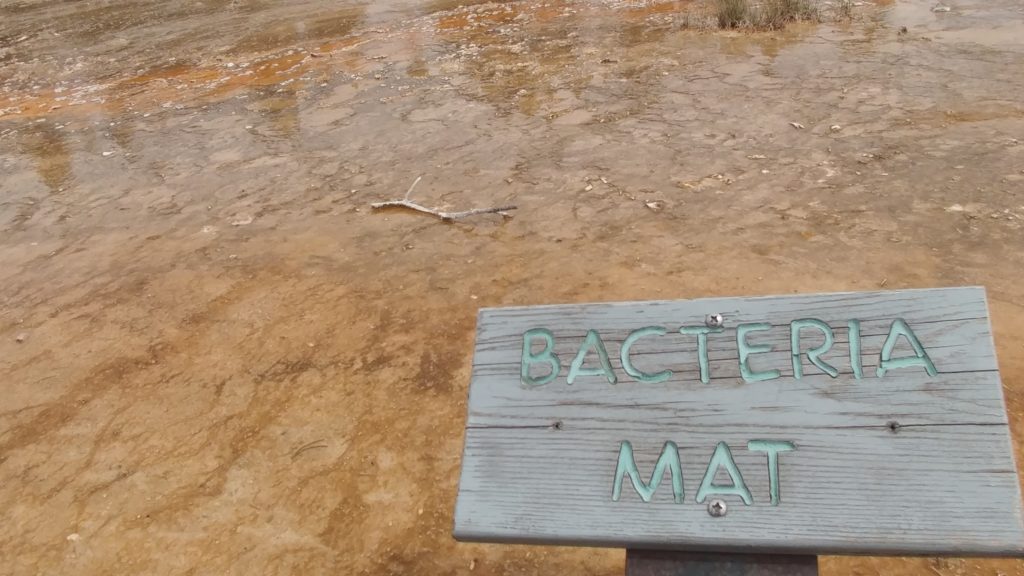
Did you see these odd looking trees? We were curious why they looked burned and dead. I mean, how could they have started growing in the first place when they ended up like this?
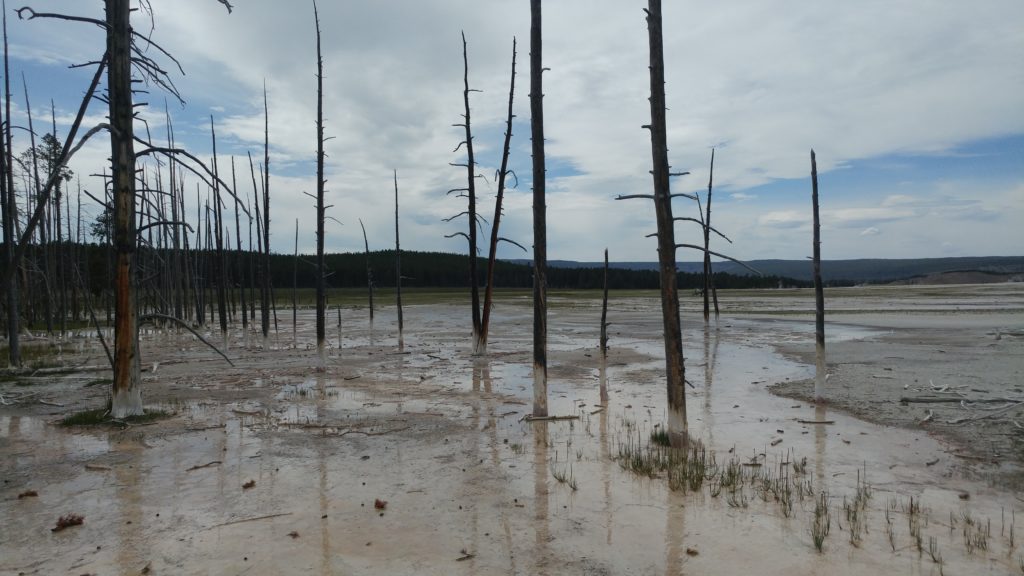
It turns out that the trees were here first! These lodgepole pine trees were drowned in super hot water that shifted up underneath them. The silica in the mud went into the bark into the tree and hardened the bases and turned them white.
We were surprised that the ground could shift under a tree within its lifetime.
There’s so much to learn and do here! We’re going to drive onto Firehole Lake now, so we can see all the geysers, and end up at Old Faithful!
If you want your kids to learn more about the world like this by doing hands-on projects in life science and biology, not to mention thermodynamics and chemistry, and if you found this information I’ve shared with you helpful and you find yourself thinking, “Hey, you know, I want this person to teach my kids science for me, and to create my curriculum lessons for me…” then we can do just that.
Go to www.SuperchargedScience.com/easy
When you get there, you’ll see a video that shows you the science curriculum that I developed and teach.
If you like what you see on that website, just fill in the form below the video and your kids can get started today doing real hands-on science with everyday materials.
INSERT yellowstone-2.mp4
